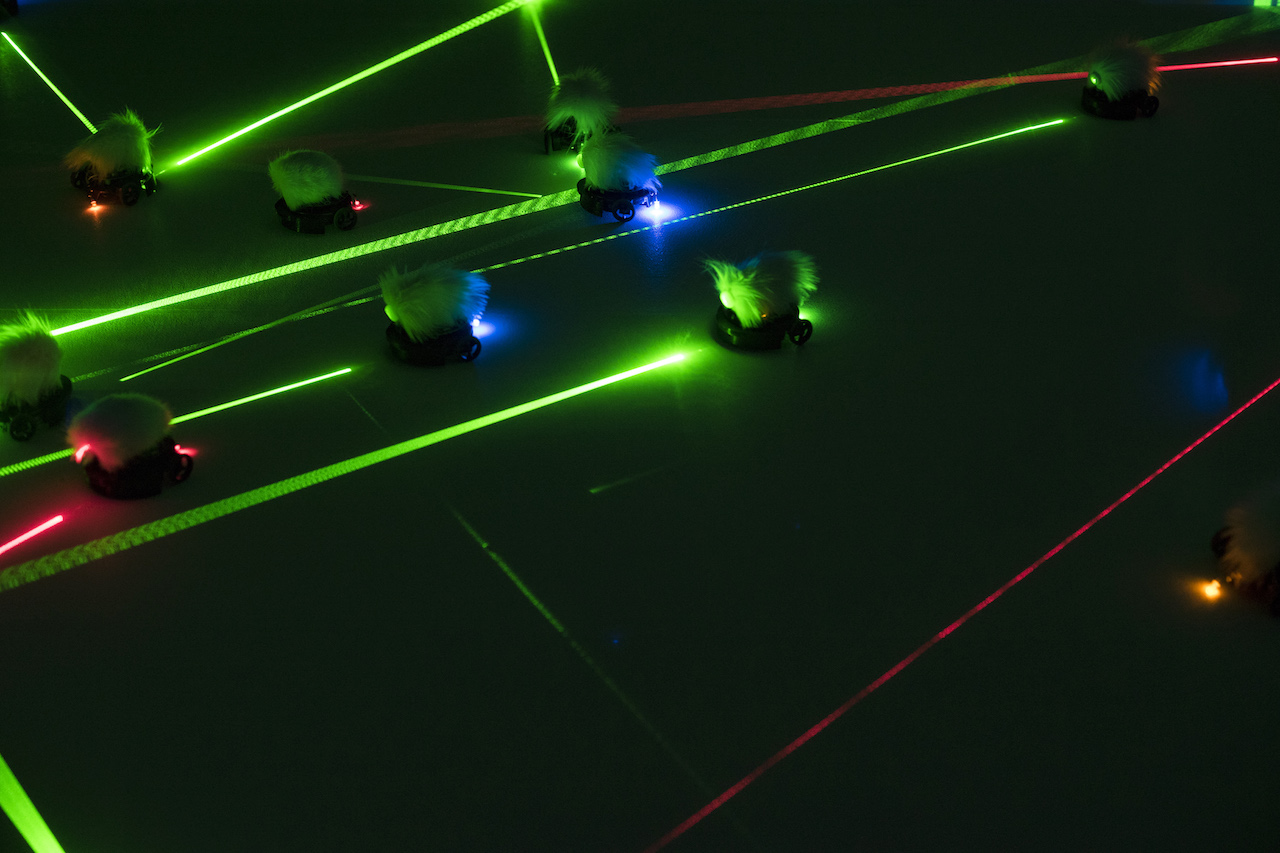22nd Art Division Excellence Award
Lasermice
Media installation
So KANNO [Japan]
Outline
Organically producing rhythms with 60 small, self-propelled robots, an installation inspired by the synchronization seen in swarming organisms like fireflies. In swarming, individuals’ communication effects group movement in unison. While unseeable with lifeforms, this work uses laser communication to make the networks visible here. In response to each other’s laserbeams, the robots synchronously produce striking sounds to give the viewer a spatial sense of the ever-changing rhythms with their sounds and lights. As we sense beauty in the workings of nature, such as frog choruses, bell cricket songs and avian murmurations, might one not be able to produce something comparably worthy of appreciation by artificial means as well? Inspired by the algorithms of natural phenomena, this work constitutes an experiment seeking new forms of expression by creating algorithms that are not merely imitational, but original.
© 2018 So Kanno
Profile
Original swarming behavior produced by mutually-sensing robots exhibiting simple organization, autonomy and fixed looping. With 60 small, rotating robots that slowly propel themselves through a space of about 50 m², the work makes visible their processes of gradual divergence from initial synchronization along with eventual returns to synchronization. With intermittent firing of lasers, mechanical keystrokes produce sounds simultaneously. Optical sensing produces further laserbeam / sound combinations to impressively effect a surprising range of dynamic variation and periods of silence in the work via chain reactions. Artificial life programming has simulated swarming before, yet the use of physical objects here yields inestimable liveliness and expressivity. From the selection of componentry to the robotics crafting and system design, all is of a level that speaks to the artist’s meticulous and persistent capacity for research. And what, I wonder, might result if reproduced with 600 robots?
(ABE Kazunao)



